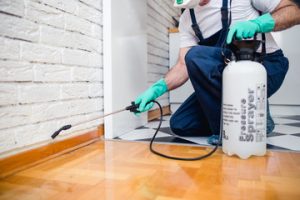Despite its name, HVAC is actually an umbrella term that encompasses all sorts of interrelated air control systems. These systems range from unitary to built-up and include products like furnaces, air conditioners, and heat pumps as well as ductwork and thermostats.

In an HVAC system, heated medium (usually air) travels from a furnace through ductwork and into rooms above. This is done through differential air pressure and gravity. Read on 24 Hour HVAC Company for more details.
The world of HVAC is vital to modern living, regulating temperature, air quality and more. Yet many people don’t fully understand how the technology works or what its components are. This confusion can make navigating the complexities of products like furnaces, AC units, and thermostats difficult. The good news is that with a little bit of insight, these systems can seem less confusing and even intuitive.
Generally speaking, an HVAC system is any combination of units that heat or cools the air in a building and ventilates it to release moisture. It also filters that air, reducing dust and other pollutants in the process. The term is often used to refer to AC units, although not all AC units are HVAC systems. It’s important to note that the systems are separate and distinct from one another, even though some contractors and builders use them interchangeably.
In a typical forced-air system, an indoor air handler houses the cooling components (including a condenser and compressor), while the heating is typically contained in an outdoor unit called a boiler or furnace. The blower in the air handler pulls air through both systems, conditioning it as it goes through and then releasing it into rooms through ductwork. In some cases, the air handler contains both a furnace and an AC unit, in which case it is referred to as a “combined system.”
Most HVAC systems utilize some form of heat pump, which uses refrigerant to cool or warm the air. In these cases, the air is warmed by a furnace or cooled by an AC unit and then passed over a series of coils where the refrigerant absorbs heat.
A common misconception is that the HVAC unit only cools the air, which could not be further from the truth. Heating is just as important to an HVAC system and it works much the same way that an AC unit does, pushing heated air through a house’s vents into each room.
Whether you are a homeowner curious about your heating and cooling options, a business owner exploring energy efficiency opportunities, or someone looking to pursue a new career in this field, it’s important to have a basic understanding of HVAC systems. This will help you to choose the right products, understand how they work, and maintain them more effectively.
Cooling
Air conditioning is one of the most important features in any home. It creates desired indoor environments and helps people live comfortably while minimizing energy costs. It also reduces indoor humidity and dehumidifies, helping prevent damage to objects inside a home or business. Whether you need to cool just one room or an entire building, HVAC professionals have solutions for every size of space.
During cooler months, an HVAC system extracts indoor heat and expels it outdoors, while cooling the interior spaces. It uses a combination of fans and coils to change the air’s temperature before it circulates through vents in your house or business. The blower motor in your air conditioner or furnace draws the indoor air over the heating and cooling elements to condition it. It then flows through ductwork, where it’s dispersed throughout the entire space.
The term HVAC can be confusing to those who aren’t familiar with it. It stands for heating, ventilation and air conditioning, and it includes many interrelated systems that regulate temperature and air quality in homes and businesses.
An HVAC system’s components include a furnace, air conditioner, heat pump or boiler, venting systems, air handlers and ductwork. A furnace converts fuel into heat by burning it in a combustion process, and the blower in the furnace pushes hot air through ductwork to warm up the spaces in a building.
Heat pumps work similarly to air conditioners, but they have the unique ability to reverse their operation during the winter to provide energy-efficient heating. The SEER and HSPF ratings on an HVAC unit refer to its cooling and heating efficiency, respectively.
There are two basic types of HVAC systems: split systems and packaged systems. Split systems consist of two units: an outdoor compressor or condenser unit and an indoor air handler or furnace. A packaged system is all-in-one, with the majority of its components for both heating and cooling housed in a single cabinet. The number of heating stages on a furnace or heat pump refers to the number of settings that it can operate at to increase or decrease the intensity of its heating operation.
Ventilation
The “V” in HVAC stands for ventilation, and it’s one of the most important functions of any system. Ventilation removes stale indoor air, adds fresh outdoor air and controls humidity and contaminants. Without good ventilation, a space quickly becomes stuffy and uncomfortable and traps in dangerous pollutants like carbon dioxide and microorganisms. Ventilation is so vital to good health that ASHRAE, the American Society of Heating, Refrigerating and Air Conditioning Engineers, publishes specific ventilation requirements for indoor spaces.
Modern HVAC systems provide ventilation through ductwork. The system is designed to bring conditioned air into rooms, while forcing stale and polluted air back outside through leaks and other means. Ductwork is comprised of supply and return ducts, vents, air handlers, filters and dampers. The ducts are the main conduit for air to move around the house, while the air handlers and filters keep unwanted contaminants from entering the space. The dampers control the amount of air that is allowed through vents and other openings.
Many older homes have problems with ventilation, as the ductwork often develops small leaks and cracks. When these holes open, the stale indoor air is drawn in through these gaps and forced out through other gaps on the opposite side. This can significantly decrease the home’s energy efficiency and cause a loss of comfort.
Fortunately, newer homes are less likely to have these ventilation problems, as they tend to be built with better-insulated ductwork and other components. However, even newer homes can suffer from poor ventilation if their ductwork is poorly installed or if they use outdated insulation and other materials that are no longer in line with current building standards.
In addition, mechanical ventilation systems are also used to improve the air quality in commercial buildings and other large spaces. These systems can increase the rate of air change, reduce the recirculation of indoor air and provide greater control over where the fresh air comes from and where the stale air is vented to. They can also help prevent odors and other pollutants from migrating between different spaces, such as from the kitchen of a restaurant to where customers can notice it.
Maintenance
Some home maintenance tasks can be put off without major consequences, but heating, ventilation and air conditioning system maintenance isn’t one of them. Regular service by a qualified professional maximizes your HVAC system’s performance, efficiency and lifespan.
Air filter maintenance: Clogged filters force your system to work harder to achieve the same temperature, reducing efficiency. Replace your filters every three months or when they show signs of wear. Coil cleaning: Over time, evaporator and condenser coils collect dust, dirt and debris. These impede efficient heat transfer and increase the risk of ice forming on the coils. Cleaning the coils ensures optimal performance and reduces energy consumption. Lubrication: Moving parts such as the motors and bearings require periodic lubrication to minimize friction and wear. Professional technicians have the tools and knowledge to do this correctly.
HVAC preventive maintenance minimizes downtime and expensive emergency repairs. It identifies and addresses minor issues before they grow into larger ones that may affect the functionality of your system.
A well-functioning HVAC system uses less energy to operate than an older or neglected system, slashing your energy bills. A properly maintained HVAC system also offers better indoor air quality for occupants, especially those with asthma and other respiratory conditions.
An HVAC maintenance plan is the yearly or bi-yearly schedule of inspections, cleaning and other maintenance activities designed to keep your system in good working order. A professional can create a customized maintenance plan that is tailored to your particular system, taking into account factors such as cost, resources and prioritization.

